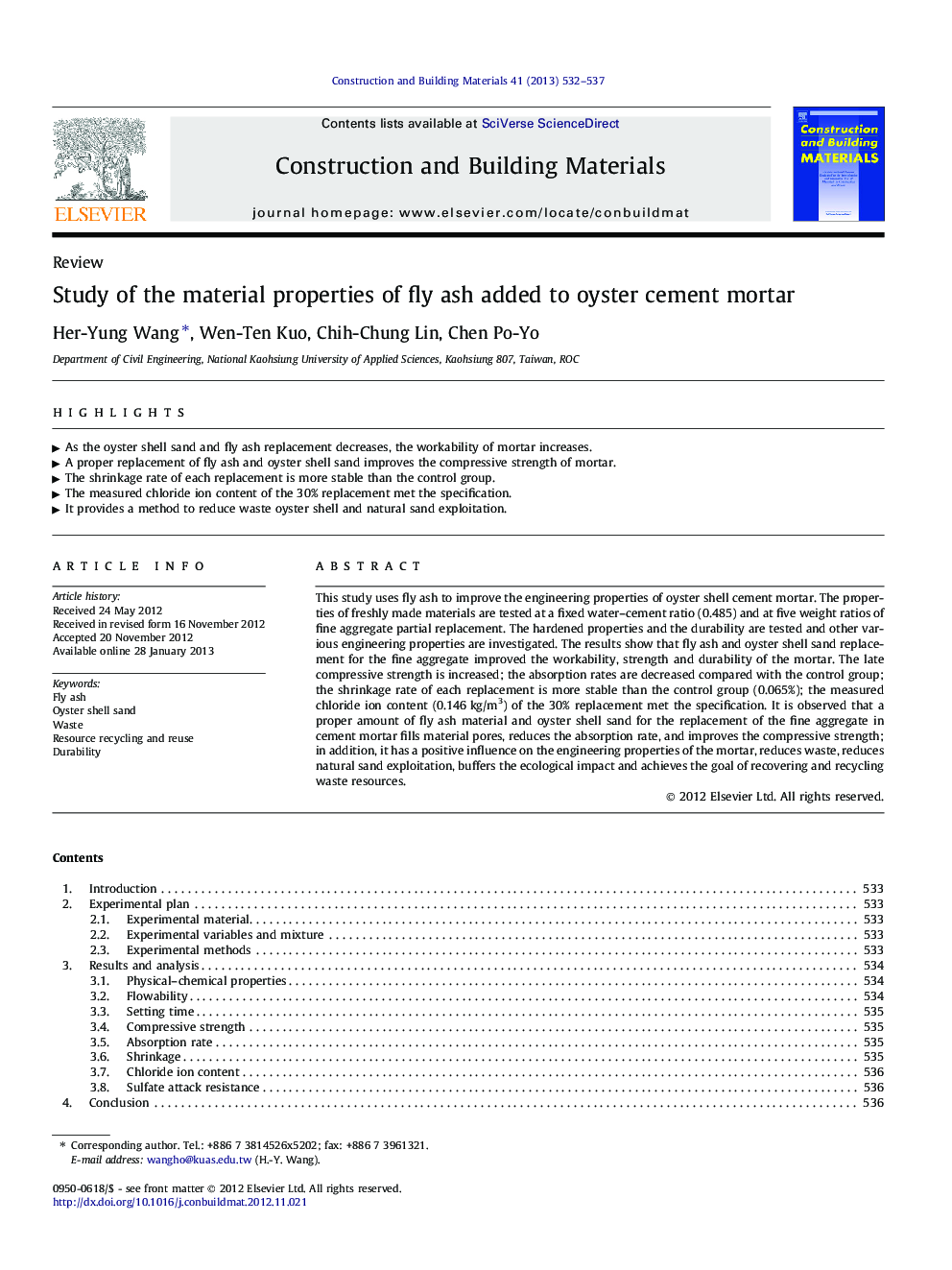| Article ID | Journal | Published Year | Pages | File Type |
|---|---|---|---|---|
| 258424 | Construction and Building Materials | 2013 | 6 Pages |
This study uses fly ash to improve the engineering properties of oyster shell cement mortar. The properties of freshly made materials are tested at a fixed water–cement ratio (0.485) and at five weight ratios of fine aggregate partial replacement. The hardened properties and the durability are tested and other various engineering properties are investigated. The results show that fly ash and oyster shell sand replacement for the fine aggregate improved the workability, strength and durability of the mortar. The late compressive strength is increased; the absorption rates are decreased compared with the control group; the shrinkage rate of each replacement is more stable than the control group (0.065%); the measured chloride ion content (0.146 kg/m3) of the 30% replacement met the specification. It is observed that a proper amount of fly ash material and oyster shell sand for the replacement of the fine aggregate in cement mortar fills material pores, reduces the absorption rate, and improves the compressive strength; in addition, it has a positive influence on the engineering properties of the mortar, reduces waste, reduces natural sand exploitation, buffers the ecological impact and achieves the goal of recovering and recycling waste resources.
► As the oyster shell sand and fly ash replacement decreases, the workability of mortar increases. ► A proper replacement of fly ash and oyster shell sand improves the compressive strength of mortar. ► The shrinkage rate of each replacement is more stable than the control group. ► The measured chloride ion content of the 30% replacement met the specification. ► It provides a method to reduce waste oyster shell and natural sand exploitation.
